Takeaways: Ultralearning, Made to Stick, and The Catcher in the Rye
As I read more, I get more paranoid about the following:
- Am I retaining what I read?
- Am I implementing what I read?
Yesterday, I revisited this book I had already read, Atomic Habits, and realized I remember NOTHING. This was upsetting, because I even did free recall, a retention exercise, for each chapter.
The reality is I have crappy memory. I should focus on having notes I can revisit. Or nah, that’s a lot of effort. I’ll just Google for the book summaries.
On the implementation side, I need to:
- Compile action items from each book I read.
- Have a productivity system that can take the action items as inputs.
I didn’t come up with this until now, but I’ll do this in March.
Anyway, back to the completed month of February.
Without further ado, here is what I read in February:
Ultralearning by Scott Young
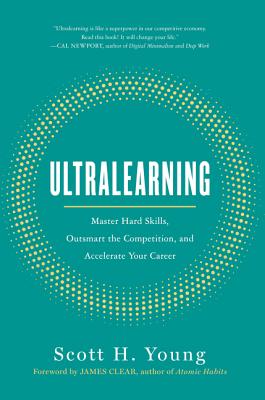
Impressions:
Ultralearning teaches you the principles behind aggressive, self-directed learning. It’s well-researched and well-organized, and I dropped Peak in favor of Ultralearning, since Ultralearning was more tactical.
As the late Intel CEO, Andy Grove, once told off Clayton Christensen:
You are such a naive academic. I asked you how to do it, and you told me what I should do. I know what I need to do. I just don’t know how to do it.
Peak has the “what you need to do” to learn effectively, but Ultralearning tells you “how to do it”. Loads of insights on the “how to do it”.
I’d add that Ultralearning had a special impact on me, because it caught me at the right time. I was at the tail end of my gap year, after many fun experiences, but never saw them as learning experiences until reading the book.
When I finished the book, when I finished Scott Young’s powerful conclusion, I came to the realization that hey, I love learning.
That rocked my world.
Given that, Ultralearning is my favorite book of the month, even if Made to Stick is the best book I read this month.
My favorite takeaways:
I’ll keep this brief, because I wrote posts on applying Ultralearning to blogging and applying Ultralearning to entrepreneurship.
But those were a month ago. What takeaways stuck?
- The magnifying glass drill approach. I’m applying it to my weekly blog posts, by spending 2x, 5x, 10x the time on what I want to drill, e.g. intros or conclusions.
- The types of feedback and the importance of them. I’m working on how to get the right kind of feedback from giving my work to friends, with help from this writing guide. I’m also planning to hire an editor on Upwork, and see how that goes.
- Free recall. After reading Ultralearning, I use free recall in my journal every day. I dump the main takeaways I remember from everything I’ve read—and experienced— that day. It helps a lot.
Made to Stick by Chip Heath and Dan Heath
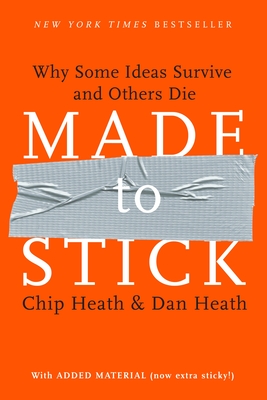
Impressions
Made to Stick gives us principles to make an idea stick:
Simple Unexpected Concrete Credible Emotional Stories S-
Now, the principles themselves may seem obvious, but the advice the book give on implementing them? Uncommon sense.
Plus, Chip and Dan practice what they preach: the two used these principles to write the book. The book is so sticky.
Must-read for bloggers and marketers. Same tier as On Writing Well.
I will start using the principles of stickiness as a checklist for future blog posts.
My Favorite Takeaways:
I’m not doing this book justice, but here goes:
- On unexpectedness: What parts of the idea you want to share break people’s “guessing machines”? Double down on those. Also, don’t tell your readers facts or points outright. Create a “knowledge gap” by posing questions first, then move into your answers. I currently don’t do this.
- On stories: We know stories are effective communication tools, but we don’t use them. Persuasion through writing is just providing a sound argument, right?
No. If you want to persuade, use stories:
One major advantage of springboard stories is that they combat skepticism and create buy-in. Denning says that the idea of telling stories initially violated his intuition. He had always believed in the value of being direct, and he worried that stories were too ambiguous, too peripheral, too anecdotal. He thought, “Why not spell out the message directly? Why go to the trouble and difficulty of trying to elicit the listener’s thinking indirectly, when it would be so much simpler if I come straight out in an abstract directive? Why not hit the listeners between the eyes?”
The problem is that when you hit listeners between the eyes they respond by fighting back. The way you deliver a message to them is a cute to how they should react. If you make an argument, you’re implicitly asking them to evaluate your argument—judge it, debate it, criticize it—and then argue back, at least in their minds. But with a story, Denning argues, you engage the audience—you are involving people with the idea, asking them to participate with you.
In this way, stories parallel “calibrated how questions” from Never Split the Difference.
I gotta make stories the foundation of my writing, but I’m resisting that, for some reason. I’ll work on this.
- In speaking, a sticky message may be more important than great delivery. In Chip’s Stanford class, he runs an activity in which students give one minute speeches. Then, after ten minutes pass, their classmates write down what they remember from the speeches. (Spoiler: not much).
I’ll admit, something about this study feels janky.
But after some analysis, Chip and Dan conclude:
…almost no correlation emerges between “speaking talent” and the ability to make ideas stick. The people who were captivating speakers typically do no better than others in making their ideas stick.
Woah!
This broke the pattern I had in my head. I’d been hearing since high school, that a great delivery matters more than your message. Now, Chip and Dan tell me crafting a sticky message might be more important than perfecting your delivery. I’ll remember that.
The Catcher in the Rye by J.D. Salinger
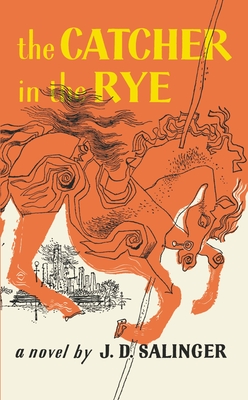
Impressions:
I’d read this in high school, but wow, I don’t remember how much this book had to do with loneliness. Holden often describes himself as lonely and depressed. But I remembered this book as about existential angst, which isn’t what I’d diagnose Holden with after this re-read. I’d diagnose him as lonely.
He reminds me of the mood I was in when I wrote the post “I feel terrible.”
Poor Holden. I understand what it feels like to feel alone, even when you’re surrounded by people. I think a lot of people can.
I noticed how active Holden is in engaging other people. He strikes up conversation with taxi drivers, nuns, even prostitutes. Holden calls his friends to hang out, even if they are phony. Still, that deep loneliness.
His conversation with his kid sister Phoebe in the middle of the night struck me. He kept saying she was such a good listener, that she really listened. That was the first place Holden properly went into why he didn’t like his school. It was also the place he talked the longest out loud.
Holden is lucky to have Phoebe. If y’all have someone who can listen to you like that, y’all lucky too. We “fake” open up and “fake” listen more than we think.
Holden is an INFP or an ENFP. The internet says INFP, but I can be persuaded either way. Examples of Ne: Wondering about where the ducks go in winter. Liking not sticking to the point in his speaking class. Examples of Fi: The whole “phony” business is classic Fi.
Sorry about the jargon.
Anyway, I love books that go deep into a character’s psyche. I don’t like third person limited stories as much. I want that depth into one or a few characters.
Landing Page Cookbook by David Oudiette

Impressions:
If you’re making a landing page, read this book, if not, don’t.
It’s a book to help you make kickass landing pages fast, by giving you a bunch of patterns. I switched back and forth between reading the cookbook and building Quickapply’s landing page.
The book incorporated points I’d read about marketing/sales elsewhere, which was fun to see. Objections, features vs. benefits, social proof (and proof in general), always be closing, etc. I also felt I understood my business better by reading this.
Getting Things Done by David Allen & Getting Results the Agile Way by J.D. Meier
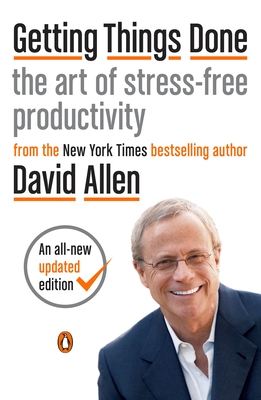
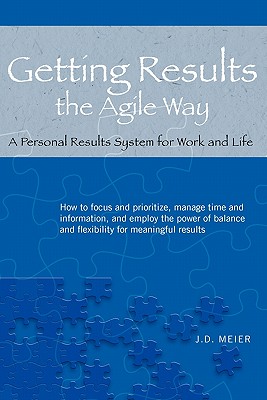
Impressions:
I don’t have a proper productivity system going, and it shows in my output. I procrastinate and mis-prioritize by default, at this point.
In school, my tasks didn’t need much definition. Do this problem set, or study for this midterm. I’d just make checklists and call it a day.
With my business (can I call it that yet?), the tasks are ambiguous. I also don’t have time to complete all the tasks that pop into my head, so I need to prioritize. In hindsight, I did a lot of low priority work without realizing it.
I’ve now put together a GTD system in Airtable. I don’t know if that was productive, but it was fun. I’m also doing parts of J.D. Meier’s system.
You can skip the GTD book if you read an in-depth blog post about the GTD system. That’s why I ended up dropping, I’d already read online material before jumping into the book.
The Getting Results the Agile Way was an alright complement to GTD. It had some handy tips. I suppose it’s not the best use of your time though.
Full disclosure: I skipped around, then dropped, both books. I read a scattered 40% of Getting Things Done, and a scattered 30% of Getting Results the Agile Way.
My favorite takeaways:
For GTD (not necessarily from the book):
- Your tasks have to be well-defined, otherwise you will procrastinate.
- If you have tons of potential tasks competing for your attention, you need to capture them all in one space, so you can consciously prioritize.
- If you don’t review your GTD system weekly, preferrably daily, it will not stay put together.
The real takeaway is the whole system, of course.
For Getting Results the Agile Way:
- Rule of three: Identify your three primary outcomes to accomplish each day, each week, each month, each year.
- Fix time for eating, sleeping, and working out. “Boundaries/limits.”
- Dump your state into a journal at the end of the day to make the next morning easier.
Conclusion
I love what Naval has to say on reading. If you made it this far, you should check it out.
Also, here are my book reviews from November and January. Check em out too.
See ya next month, Rishi

Member discussion